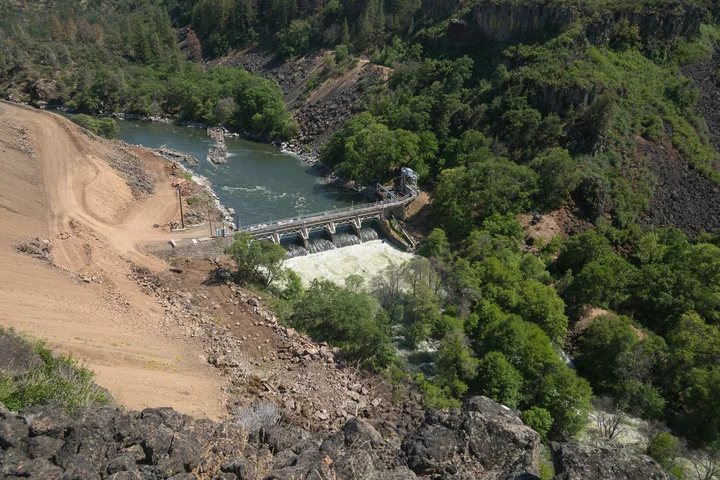Final Blast Removes the Copco No. 2 Dam from the Klamath River

In a significant environmental milestone, the Copco No. 2 Dam and its associated diversion infrastructure have undergone their final phases of removal this week. This follows the successful dismantling of the dam structure in September, with subsequent efforts focused on clearing the remaining diversion infrastructure, reshaping the river channel, and implementing vital erosion control measures.
These critical activities are preparing the river canyon for the consistent flow of water, a phenomenon that has been absent for an astonishing 98 years. After the blast, photos showed the Klamath River flowing freely. Here is the before photo:

And here it is after the removal:

As of now, river flows in the canyon have been fluctuating due to ongoing work associated with the Copco No. 1 dam’s preparations for drawdown.
“Copco No. 2 is the first dam to be removed due to its small stature, location, and lack of reservoir, said Mark Bransom, CEO of the Klamath River Renewal Corporation. “However, while Copco No. 2 was significantly smaller than the other dams slated for removal, it still had a significant impact on the river.”
Copco No. 2 was positioned just below Copco No. 1 in the picturesque river canyon known as Ward’s Canyon, named after Kitty Ward, a Shasta Woman who once resided in the now-submerged valley created by Copco No. 1’s reservoir. Completed in 1925, Copco No. 2 served as a diversion dam, channeling the river’s flows out of the canyon and into a tunnel system leading to the downstream Copco No. 2 powerhouse. This essentially resulted in the canyon’s dewatering, an enduring condition for over a century.
Crews just completed the final blast on Copco 2 Dam & removed the remaining concrete from the riverbed! With the dam gone & diversion infrastructure removed, the Klamath River can now flow freely through 1.7 miles of canyon, which had been without water since dam construction ? pic.twitter.com/M3SJn3cUYX
— California Trout (@CalTrout) November 2, 2023
The absence of river flow allowed trees to take root in the riverbed, creating potential hazards for future recreationists once consistent river flows returned. In September, a collaborative effort with local tribes successfully removed these trees, paving the way for the river’s resurgence.
Laura Hazlett, COO of KRRC, expressed her enthusiasm, saying, “Seeing the Klamath River flow through this canyon after being diverted for nearly a century is inspiring. It makes me excited for everything else that is to come with the removal of the other three dams.”
The removal of Copco No. 1, Iron Gate, and JC Boyle, the remaining three dams, is scheduled for the upcoming year. In January, KRRC will initiate drawdown, the gradual lowering of the reservoirs, which is expected to take 3-5 months, contingent on spring runoff levels. Once drawdown is accomplished, restoration and deconstruction operations will commence in earnest. The complete removal of all three dams is anticipated by November 2024, with ongoing restoration endeavors to ensure long-term success. This marks a significant step forward in rejuvenating the Klamath River ecosystem and its surrounding areas.
